The field of knowledge, especially chemistry has undergone many developments from time to time. Many ancient chemists have discovered new theories in this field and are beneficial to humankind. It is also possible that in the future will there will be more discoveries in the field of chemistry along with the life necessities. Here are 15 list of famous chemists from the past that is known for their phenomenal and recognized discoveries worldwide:
You may also read:
1. Marie Curie
 Marie Curie was born on November 7, 1867 in Warsaw, Poland. Marie’s parents are a school teacher. At the age of 4, she has learned to read. Ever since childhood Marie has shown interest in the science instruments that his father had at home. After graduated from college, Marie worked as a teacher and founded a free university for women because at that time the college in Poland did not want to accept female students.
Marie Curie was born on November 7, 1867 in Warsaw, Poland. Marie’s parents are a school teacher. At the age of 4, she has learned to read. Ever since childhood Marie has shown interest in the science instruments that his father had at home. After graduated from college, Marie worked as a teacher and founded a free university for women because at that time the college in Poland did not want to accept female students.
In 1891, Marie went to Paris and joined Sorbonne University to study physics and mathematics. There he met Pierre Curie who later became her husband in 1895. Pierre Curie was professor of physics and chemistry at the school.
Discoveries
Marie and Pierre worked together to investigate radioactivity based on findings from French Physicist Henry Becquerel and German Physicist Roentgen. In 1898, this couple found a polonium and radium element. Because of that discovery both received Noble Prize for Physics in 1903 along with Henry Becquerel.
In 1906, Pierre Curie died.
After that incident Marie continues the research that was conducted by Pierre before and made Marie as the first woman to teach at the Sorbonne. Because of her dedication to science, Marie received her second Nobel Prize in 1911. This time she received a Nobel Prize in chemistry for her discovery of radium and its compounds. At that time Marrie also successfully proved that radium can treat some diseases. Even to this day, this discovery has become very beneficial to the medical world in the treatment of cancer.
Marie is known as the first one that introduced the use of X-Ray technology and radium in the medical field. In addition Marie Curie is also the first person to get 2 Nobel Prizes in different fields which are physics and chemistry.
Death
During the First World War, Marie Curie helped the victims by riding an ambulance equipped with X-ray equipment. The International Red Cross entrusted Marie as the head of radiology services where at that time she and her colleagues held classes for medical personnel on the use of this technology. Because Marie Curie is often exposed to this hazardous radioactive element, Marie gets sick and eventually dies at the age of 66 on July 4, 1934. Marie Curie is known by the world for her discoveries and is also a great female scientist.
2. Louis Pasteur
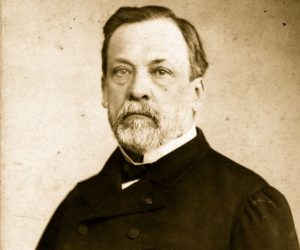 Louis Pasteur is a French chemist who contributes a lot in the field of medicine, chemistry, and industry that is useful in the field of humanity. His discovery of bacteria that can spread the disease has saved the lives of many people. Louis Pasteur is a very influential scientist in history, and made him a founder of microbiology.
Louis Pasteur is a French chemist who contributes a lot in the field of medicine, chemistry, and industry that is useful in the field of humanity. His discovery of bacteria that can spread the disease has saved the lives of many people. Louis Pasteur is a very influential scientist in history, and made him a founder of microbiology.
Louis Pasteur was born in Dole, France on December 27, 1822. He lived his school life normally and has a talent in the arts, especially painting and drawing. Although Pasteur was not very good in his lessons, he was a hardworking and meticulous child. With encouragement from his teacher, Louis Pasteur studied hard to enter the college of the Ecole Normale Superieure. Because of his hard work, Louis Pasteur earned his doctor’s degree in this place in 1847.
Louis Pasteur did a lot of research and also taught for a year at Dijon Lyce. After that he became professor of chemistry at Strasbourg University in 1848. In this place he met with his wife Marie Larent who was the son of the university rector. They married in 1849 and had five children, but only 2 children survived.
Discoveries
While working at the University of Strasbourg, Louis Pasteur began his research on fermentation, which is the process of breaking organic materials using microorganisms. In 1854, Pasteur joined and became a member of the chemistry faculty at Lile. There he continued his research on fermentation. At that time, many scientists believe that fermentation occurs spontaneously due to a series of chemical reactions, in which the enzyme acts as the primary key. But Pasteur at the time believed that fermentation occurred due to the presence of living microorganisms.
In Lile, Louis managed to demonstrate that microorganisms play an important role in the acidification of beer and wine. He points out that the same microbe can be removed by a process called pasteurization, which is the boiling and cooling the liquid immediately. Then he continued his research using milk. With that research Pasteur proved that the microorganisms that play a role in the acidification of beer, wine, and milk naturally come from the environment.
In 1857, Pasteur joined as director of scientific studies at the Ecole Normale. Here he continued his research on the fermentation process. He was asked by the silk industry in France to help them to overcome the epidemic on silkworms. Despite not having much experience, Pasteur managed to identify the cause of the infection and was able to save the silk industry.
Pasteur proved that disease in the human body is caused because microorganisms can multiply in the body. He also found that if microbes were attenuated and inserted into the animal’s body, it can create resistance to other microbes. This method is then used in vaccinations.
In 1868, Louis Pasteur suffered a stroke and caused him partial paralysis. Nevertheless, he still continued on his researches. In 1879, he found the first vaccine of chicken cholera vaccine. Then he found other vaccines such as vaccines for anthrax, tuberculosis, small pox, and cholera. Furthermore, he focused on rabies vaccine in 1882. The discovery of this rabies vaccine made Pasteur suddenly famous and prompted the international fundraising campaign to construct the Pasteur Institute in Paris.
Death
Louis Pasteur died at the age of 72 on September 2, 1895. His body was later transferred to a basement at the Pasteur Institue in 1896.
You may also read:
3. Alfred Nobel
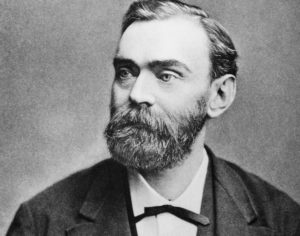 Alfred Nobel was born on 21 October 1833 in Stockholm, Sweden. He was born in a family with background of engineers and businessmen. In 1842, Alfred and his family moved to St. Petersburg where his father, Immanuel Nobel, had built a factory for armaments a few years earlier.
Alfred Nobel was born on 21 October 1833 in Stockholm, Sweden. He was born in a family with background of engineers and businessmen. In 1842, Alfred and his family moved to St. Petersburg where his father, Immanuel Nobel, had built a factory for armaments a few years earlier.
During his lifetime, Alfred was someone who mastered 4 foreign languages and also someone who showed great intelligence in the field of natural sciences, especially chemistry.
Discoveries
In 1850, Alfred went to several countries such as Sweden, France, Germany, and United States to study chemical engineering. In 1863 he returned to Sweden and devoted almost all his time to explosives. Alfred showed great interest in the safe manufacture of a compound called nitro-glycerin. Nitro-glycerin is a highly unstable explosive. Alfred’s interest was due to his brother Emil being killed in an explosion caused by this compound. Alfred tried to add nitro-glycerin into silica. This causes the compound to be safer and easier to handle.
In 1867, he perfected this discovery and then called it dynamite. This dynamite delivered Alfred Nobel as one of the influential chemists in history. Dynamite was then sold throughout the world to blow up tunnels, build railroads, roads, and cut canals. Alfred Novel then created several other kinds of explosives and the results are known throughout the world. He later received an award from the Royal Swedish Academy of Sciences. This award was given because the findings of Alfred Nobel are useful in life and this award also brought Alfred Nobel received several other science awards.
Death
Alfred Novel died at the age of 63 years of December 10, 1896 at his home in Sanremo, Italy. His body then buried in Stockholm, Sweden. Before he died Alfred wrote a will which stated that his entire estate should be used as an annual prize in chemistry, physics, medicine, literature, peace, and economics. The results of this were known after Alfred died. With his generosity and selflessness, the Nobel Prize becomes inspiration and motivation for scientists from various fields.
You may also read:
- Development of Atomic Theory
- Branches of Biochemistry
- Branches of Physical Chemistry
- Branches of Analytical Chemistry
4. Antoine Lavoisier
 Antoine Lavoisier was a French scientist who born on August 26, 1743 in Paris. The Lavoisier family was an influential family in Paris at the time. At the age of five, Lavoisier’s mother died and left a lot of wealth for him. In the mid-1700s, Lavoisier entered the College Mazarin to study astronomy, botany, chemistry, and mathematics. He then obtained a law license in 1764 before developing his career in science. At the age of 25, he became a member of France’s elite scientific organization, the French Academy of Sciences.
Antoine Lavoisier was a French scientist who born on August 26, 1743 in Paris. The Lavoisier family was an influential family in Paris at the time. At the age of five, Lavoisier’s mother died and left a lot of wealth for him. In the mid-1700s, Lavoisier entered the College Mazarin to study astronomy, botany, chemistry, and mathematics. He then obtained a law license in 1764 before developing his career in science. At the age of 25, he became a member of France’s elite scientific organization, the French Academy of Sciences.
Discoveries
Antoine Lavoisier is known as the father of modern chemistry. The first invention was the role of oxygen in metal corrosion, and respiration of plants and animals. Lavoisier conducted research with Pierre-Simon Laplace to prove that respiration is fundamentally a very slow type of combustion of inhaled oxygen. This finding suggested that the previously known phlogiston theory was false, because the theory stated that organic materials released phlogiston components.
In addition, Lavoisier also helped to develop a whole new chemical nomenclature system which stated that oxygen was an important component in all acids, which was then proven to be erroneous. Lavoisier did not find a new compound because basically he was a theorist. He managed to take over the research done by other scientists who worked with him. He also managed to create a metric system that was used as a uniformity of weight and measures in France when he worked for the government.
Death
Lavoisier was known as a powerful figure in the Ferme Generale, which is a privately-held business that collected taxes for the royal government. The organization was not popular because the public thought the organization profited because of their position. In 1974, Lavoisier was accused of being a traitor during the Reign of Terror. He was tried and found guilty and must be guillotined in May 1794. And 18 months later Lavoisier was found not guilty by the government.
You may also read: Postulates of John Dalton – Louis de Broglie Quantum Theories
5. Dmitri Mendeleev
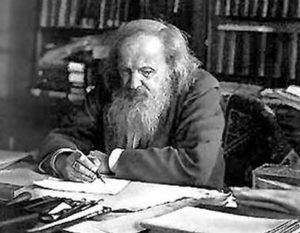 Dmitri Mendeleev is a Russian scientist who was born on February 8, 1834 in Verkhnie Aremzyani, Russia. The Dmitri family owns a glass factory that run by both of his parents. One day Dmitri’s father became blind and could not work again so it must be passed on by his mother. The factory then became more and more developed. When Dmitri was 14 years old, the factory was on fire so the whole family had to move to St. Petersburg. There he studied at Institue Pedagogy.
Dmitri Mendeleev is a Russian scientist who was born on February 8, 1834 in Verkhnie Aremzyani, Russia. The Dmitri family owns a glass factory that run by both of his parents. One day Dmitri’s father became blind and could not work again so it must be passed on by his mother. The factory then became more and more developed. When Dmitri was 14 years old, the factory was on fire so the whole family had to move to St. Petersburg. There he studied at Institue Pedagogy.
Discoveries
Mendeleev has a good reputation as a scientist in several fields: spectroscopy and the capillary action of liquids. In 1864, he became a professor at St. The St. Petersburg Technology Institute and the following year became a professor at Saint Petersburg State University.
Mendeleev was known for his work on the better system for classifying elements in early 1863. At that time scientists used one of two systems to classify elements. The two systems are ordering them by atomic number or ordering them by their properties.
In 1869, Mendeleev attempted to combine these two systems into a single system. He created a table, with various experiments, where the elements are arranged based on the atomic number in the horizontal row, then called the group, and according to their properties (specifically electron valence) in horizontal rows that he called periods. This periodic table from Mendeleev has undergone some changes, but is fundamentally not so altered and becomes a remarkable scientific achievement.
Death
Dmitri Mendeleev died at the age of 72 years on February 2, 1907 at St. Petersburg, Russia.
You may also read:
- Democritus Theory of Atoms
- Scientists Who Contributed to The Atomic Theory
- Democritus Theory of Atoms
The other Famous Chemists
Indeed, many list of chemist that we need to know to develop our knowledge in chemist and more science.
1. John Dalton (1766 – 1844)
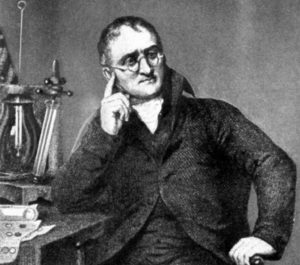 He is known for his findings on the identification and expression of atomic theory. In addition to his atomic theory, he is also known for his research on color blindness. Dalton managed to identify chemical compounds and reactions that were affected by the interaction of one atom with another.
He is known for his findings on the identification and expression of atomic theory. In addition to his atomic theory, he is also known for his research on color blindness. Dalton managed to identify chemical compounds and reactions that were affected by the interaction of one atom with another.
Also read: Postulates of John Dalton
2. George Washington Carver (1864 – 1943)
 George Washington Carver is well known in agricultural and crop management. He found that in vegetables such as sweet potatoes and legumes contain enough nitrogen that can be utilized to fertilize the soil. These findings greatly helped the cotton plantations in his era.
George Washington Carver is well known in agricultural and crop management. He found that in vegetables such as sweet potatoes and legumes contain enough nitrogen that can be utilized to fertilize the soil. These findings greatly helped the cotton plantations in his era.
3. Robert Boyle (1627 – 1691)
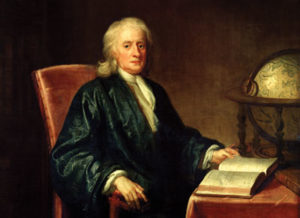 Robert Boyle is a scientist known as Father of Chemistry. He is the first scientist to apply the scientific method into chemistry and physics. His famous finding is the relationship between volume and pressure of gas.
Robert Boyle is a scientist known as Father of Chemistry. He is the first scientist to apply the scientific method into chemistry and physics. His famous finding is the relationship between volume and pressure of gas.
4. Linus Pauling (1901 – 1994)
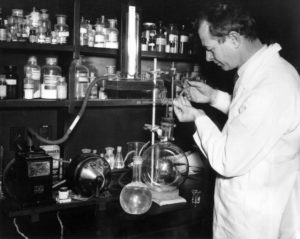
Linus Pauling has great contributions in chemistry, mineralogy, molecular biology and quantum chemistry. He succeeded in defining the chemical structure of various inorganic compounds and trying to understand the rules that govern the structures of these chemical compounds.
5. Otto Hahn (1879 – 1968)
 Otto Hahn is known as Father of Nuclear Chemistry. He was awarded the Nobel Prize of Chemistry in 1944. His most notable finding was the development of the use of toxic gases such as mustard gas and chlorine used in the First World War.
Otto Hahn is known as Father of Nuclear Chemistry. He was awarded the Nobel Prize of Chemistry in 1944. His most notable finding was the development of the use of toxic gases such as mustard gas and chlorine used in the First World War.
6. Stanislao Cannizzaro (1826 – 1910)
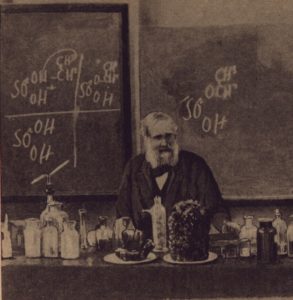 Stanislao Cannizzaro is known for his findings “The Cannizzaro reaction”. This finding explains how a chemical reaction takes place on certain elements of the hydrogen atom. Another important role of Cannizzaro is to increase atomic-weight deliberation in 1860.
Stanislao Cannizzaro is known for his findings “The Cannizzaro reaction”. This finding explains how a chemical reaction takes place on certain elements of the hydrogen atom. Another important role of Cannizzaro is to increase atomic-weight deliberation in 1860.
7. Thomas Graham (1805 – 1869)
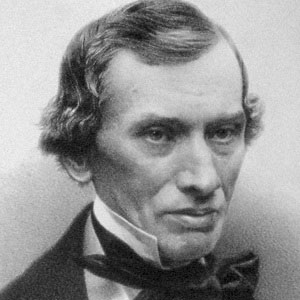 Thomas Graham is well known for his findings on the use of dialysis based on the study of colloids. At that time he managed to separate crystalloids from colloids using a dialyzer. The findings of this gas diffusion later became known as Graham’s theory.
Thomas Graham is well known for his findings on the use of dialysis based on the study of colloids. At that time he managed to separate crystalloids from colloids using a dialyzer. The findings of this gas diffusion later became known as Graham’s theory.
8. Svante Arrhenius (1859 – 1927)
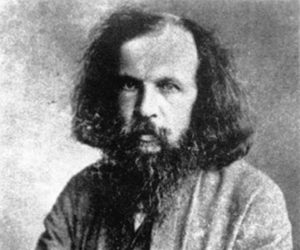 Svante Arrhenius is a Swedish chemist who obtained the Nobel Prize in 1905 in chemistry. He is known for several discoveries such as the theory of ionic dissociation and acid-base theory. In addition to chemistry, he is also known for his contribution in the field of chemical physics.
Svante Arrhenius is a Swedish chemist who obtained the Nobel Prize in 1905 in chemistry. He is known for several discoveries such as the theory of ionic dissociation and acid-base theory. In addition to chemistry, he is also known for his contribution in the field of chemical physics.
9. Frederick Sanger (1918)
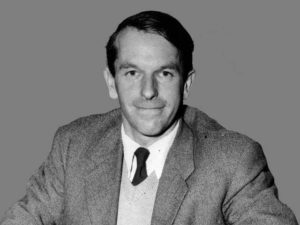 The next list of chemists is Sanger. Frederic Sanger is known for his study in sequencing DNA, insulin, and RNA. He received the Noble Prize for two times in 1958 and 1980 for his dedication in chemistry. He is the first one who successfully determined the base sequence in nucleic acid.
The next list of chemists is Sanger. Frederic Sanger is known for his study in sequencing DNA, insulin, and RNA. He received the Noble Prize for two times in 1958 and 1980 for his dedication in chemistry. He is the first one who successfully determined the base sequence in nucleic acid.
10. Fritz Haber (1868 – 1934)
 Frits Haber is known as “Father of Chemical Warfare” for the development of chlorine and poisonous gases during the First World War. The other work from him is synthesizing ammonia used in fertilizers and explosives. Due to this study, he received the Nobel Prize in 1918.
Frits Haber is known as “Father of Chemical Warfare” for the development of chlorine and poisonous gases during the First World War. The other work from him is synthesizing ammonia used in fertilizers and explosives. Due to this study, he received the Nobel Prize in 1918.
Indeed, there are list of chemists that invented many of scientific knowledge. Without them, this world would not develop as good as it is now.
You may also read :

